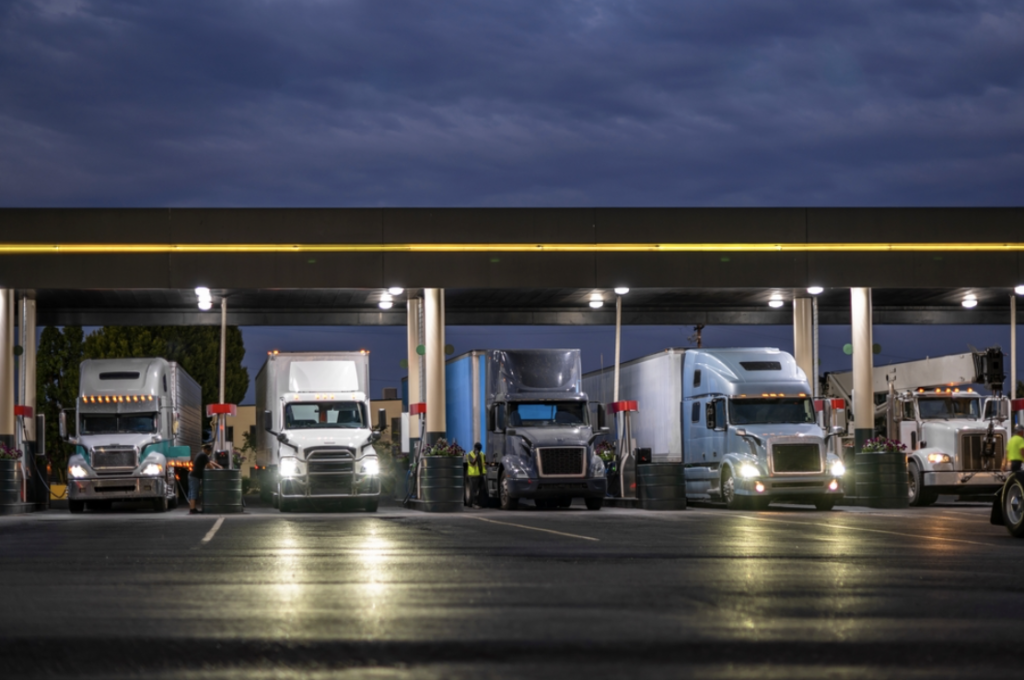For truck drivers, safety on the road is a top priority, not just for their own protection but for the safety of everyone they share the road with. The size and weight of commercial trucks make them particularly powerful vehicles, but that also means they can cause serious damage if involved in an accident. One of the best ways for truck drivers to stay safe and keep their driving record clean is through defensive driving.
Defensive driving goes beyond basic driving skills. It’s a mindset, a skill set, and a commitment to staying alert, aware, and prepared for anything that might happen on the road. This article will explore why defensive driving is so essential for truckers, its benefits, and practical tips for becoming a more defensive driver.
What is Defensive Driving?
Defensive driving involves a series of strategies and behaviors designed to help drivers avoid accidents and react to potential hazards quickly and safely. Unlike offensive driving, which can include aggressive behavior and risky maneuvers, defensive driving is focused on caution, anticipation, and control.
Defensive driving includes:
- Staying alert to surroundings
- Maintaining safe distances from other vehicles
- Recognizing and responding to road hazards
- Adjusting speed and position according to conditions
- Being ready to react to the unexpected actions of other drivers
For truckers, practicing defensive driving is particularly important because their vehicles are harder to stop and maneuver, making accidents more likely if quick reactions are required. Defensive driving gives truckers an edge in staying prepared for unexpected challenges.
Why Defensive Driving is Crucial for Truck Drivers
1. Increased Stopping Distance
The average passenger vehicle can stop in a relatively short distance, but trucks are much heavier and require significantly more time and space to come to a complete stop. Defensive driving involves knowing when to start braking and allowing extra space to compensate for this increased stopping distance.
2. Handling Difficult Weather Conditions
Truck drivers face all kinds of weather, from heavy snow to rain, fog, and wind. Defensive driving includes skills to handle these conditions safely, such as reducing speed, increasing following distance, and being cautious around curves. By adjusting driving behaviors for the weather, truckers can reduce their risk of accidents.
3. Navigating Through High-Traffic Areas
City driving, intersections, and congested highways are all part of a truck driver’s job. Defensive driving skills are essential in these environments, where traffic can stop suddenly or drivers may merge without warning. A defensive driver anticipates the potential actions of others and stays focused, which can help avoid fender-benders and serious accidents alike.
4. Dealing with Road Hazards
Road hazards like debris, potholes, animals, and construction zones can cause problems for any driver, but truck drivers are at an even greater risk. With defensive driving techniques, truckers can anticipate hazards and plan their moves to avoid them. Slowing down, scanning the road ahead, and giving themselves enough room to react are key defensive tactics for handling unexpected hazards.
Benefits of Defensive Driving for Truckers

1. Reduced Risk of Accidents
The main benefit of defensive driving is a lower risk of accidents. By staying alert, maintaining safe distances, and anticipating other drivers’ actions, truckers can often avoid situations that lead to collisions. Fewer accidents mean fewer injuries, lower insurance costs, and less downtime due to repairs.
2. Improved Fuel Efficiency
Defensive driving isn’t just about safety; it can also save money. Aggressive driving behaviors, such as speeding and rapid braking, consume more fuel. Defensive driving promotes steady speeds, gradual braking, and smooth acceleration, all of which contribute to better fuel economy. For a truck driver who spends hours on the road, these savings can add up quickly.
3. Enhanced Reputation and Employment Opportunities
Safety records are incredibly important for truck drivers. Many companies prioritize hiring drivers with clean records and few, if any, accidents. Practicing defensive driving helps truckers build a positive reputation as safe, reliable drivers. Over time, a solid safety record can open doors to better routes, more jobs, and even higher pay.
4. Lower Maintenance Costs
Aggressive driving can wear out a vehicle faster than careful driving. Frequent hard braking, rapid acceleration, and rough handling all contribute to faster wear and tear on a truck’s brakes, tires, and other components. Defensive driving promotes smooth handling, which helps prolong the lifespan of a truck’s parts, reducing maintenance costs over time.
Key Defensive Driving Techniques for Truckers
1. Keep a Safe Following Distance
One of the cornerstones of defensive driving is maintaining a safe distance from the vehicle in front. For truckers, this means following at least four to six seconds behind in good conditions, and even longer when the weather is poor. This allows more time to react if the vehicle ahead stops suddenly.
2. Scan Far Ahead and Use Mirrors Frequently
Truck drivers should always keep an eye on the road ahead, scanning not only the vehicles immediately in front but also those further down the road. Checking mirrors frequently is also essential to stay aware of what’s happening on both sides and behind the truck.
3. Stay Calm and Avoid Road Rage
Aggressive drivers can pose a risk to everyone on the road. By keeping a calm demeanor and avoiding interactions with aggressive drivers, truckers can stay focused and avoid escalating dangerous situations. If a driver is tailgating or cutting in too closely, it’s best to stay calm, let them pass, and continue driving defensively.
4. Adjust Speed According to Conditions
Speeding is one of the leading causes of accidents among truck drivers. Defensive driving involves adapting speed based on the road, traffic, and weather conditions. Slowing down during rain, snow, or heavy traffic can make a huge difference in reaction time and stopping distance.
5. Be Ready for the Unexpected
Defensive drivers understand that not everyone on the road is following safe driving practices. Being prepared for sudden lane changes, sudden stops, or erratic behavior from other drivers can make the difference between an accident and a close call. This readiness requires complete focus, so avoiding distractions while driving is essential.
Defensive Driving and Technology: Tools That Can Help
Modern trucks often come equipped with technology to assist with defensive driving. These tools can complement a driver’s skills and help create a safer environment. Some of the most common tech aids for defensive driving include:
- Lane Departure Warning Systems: These systems alert drivers when they drift out of their lane, helping truckers stay centered and aware.
- Collision Avoidance Systems: These systems can detect potential collisions and alert the driver, providing time to respond.
- Blind Spot Monitors: Trucks have larger blind spots than most vehicles, and blind spot monitors can help reduce the risk of sideswipes.
While technology can be helpful, it’s important to remember that no tech can replace the vigilance and caution of an experienced defensive driver. Relying solely on technology can lead to complacency, so truck drivers should view these tools as a supplement to their own driving skills, not a replacement.
Conclusion
Defensive driving is one of the most valuable skills a truck driver can develop. It’s about being proactive, staying alert, and always expecting the unexpected. By incorporating defensive driving techniques into their daily routines, truckers can significantly reduce their risk of accidents, improve fuel efficiency, save on maintenance costs, and enhance their reputation as safe, reliable drivers.
In an industry where safety is everything, defensive driving is a fundamental practice that pays off in numerous ways. For truck drivers, the road is not just a means to get from one place to another—it’s a workplace, and practicing defensive driving ensures it’s as safe as possible for everyone.

